The FOSS Force Linux App of the Week — Warehouse
If you’re not using one of the many Linux distro’s that comes with Flatpak management already built in, Warehouse is here to help.
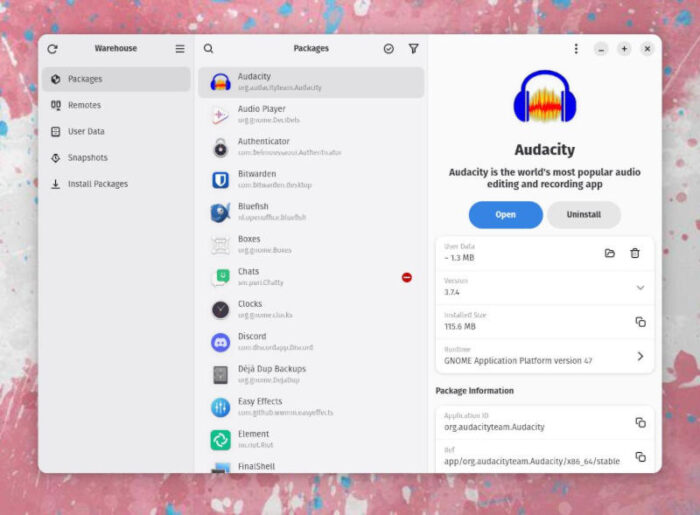
If you’re looking to make the care and feeding of your Flatpak apps a bit easier, there’s an app just for that: Warehouse.
I regularly install Flatpak apps. Why? One, because they’re very easy to install. Two, because there are apps available on Flathub that aren’t available elsewhere. For those two reasons, Flatpak has become a necessity for me.
The problem with Flatpak apps is that they can be a bit challenging to manage, especially for those who might not be familiar with the command line.
Fortunately, Warehouse is an app that was designed specifically for managing Flatpak apps. It’s open source, licensed under the GPLv3, and it includes features like:
- Manage installed Flatpaks.
- View the properties of any installed Flatpak package.
- Change the version of a Flatpak app to avoid unwanted updates.
- Pin runtimes and/or mask Flatpaks.
- Filter packages and sort data.
- See current app user data.
- Clean up any unused data.
- Add popular Flatpak remotes and add custom remotes.
- Take snapshots of your apps’ user data.
- Install new packages from any remote (or from local storage).
Warehouse is very easy to use and should be considered a must for anyone who installs a lot of Flatpak apps and wants to have at least a modicum of control over them.
Let’s get Warehouse installed and see what it’s all about.
What You’ll Need
The only thing you’ll need for this is a Linux distribution that supports Flatpak. If you don’t already have Flatpak installed, you’ll find it in your distribution’s standard repositories, so it can be installed with commands like:
- Ubuntu –
sudo apt-get install flatpak -y - Fedora –
sudo dnf install flatpak -y - Arch –
sudo pacman -S flatpak -y
Let’s install.
Installing Warehouse
Guess what? You install Warehouse with Flatpak. That’s right, it’s a Flapak app that manages Flatpak apps. Go figure.
To install Warehouse, open your terminal window (you knew that was coming) and issue the command:
flatpak install flathub io.github.flattool.Warehouse
When that finishes, check your desktop menu to see if there’s an entry for Warehouse. If not, you can always log out and log back in, and the entry will definitely appear. Once you see the launcher, click it to open the app.
Using Warehouse
Using Warehouse is super easy. When you first open the app, it should land on the Packages page (see image at the top of the page), where you can view the entire list of Flatpak apps you have installed. You can also locate information about each app, clear user data, and more.
If you go to the Snapshots section, you can create a snapshot of the user data for a package. This can be helpful if something goes wrong with a package, because you can locate a working snapshot for the app, click Apply, and you should be good to go.
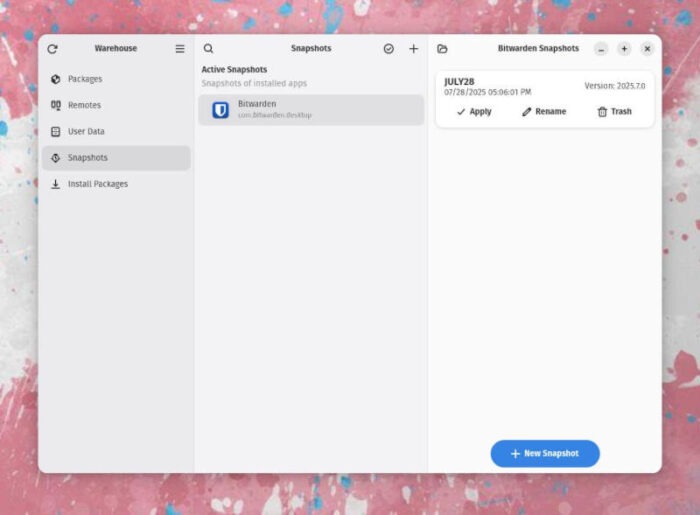
Warehouse also simplifies the installation of Flapak apps. Click the Install Packages tab, type the name of the app you want to install, and then click the associated + button to install.
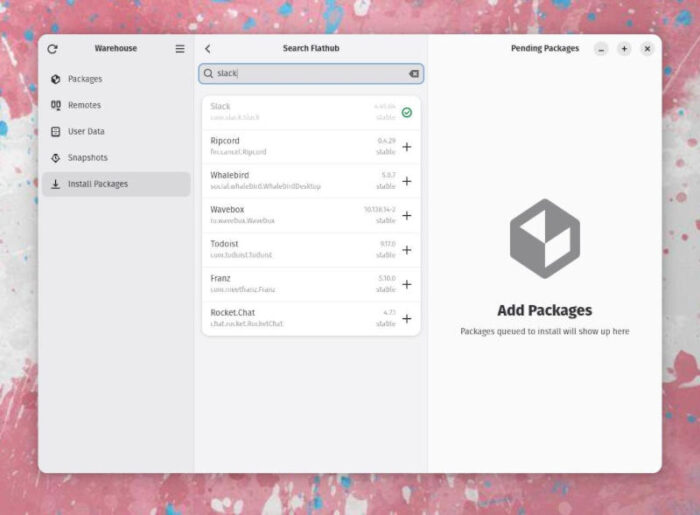
Warehouse also scans for leftover data from an app uninstall. Should Warehouse find any unused data, it will give you the option to either remove it or reassign it to another app.
You can also add Flatpak remotes, in case you find apps on another repository that aren’t found in Flathub. I will offer this word of caution: installing Flatpak apps outside of Flathub is a tricky proposition because you never know if a repository houses malicious apps. Because of that, be very careful of the third-party repos you add.
And that, my friends, is Warehouse. If you install a lot of Flatpak apps on your Linux system, add this to help manage those apps.

Jack Wallen is an award-winning writer for TechRepublic, ZDNET, The New Stack, and Linux New Media. He’s covered a variety of topics for over twenty years and is an avid promoter of open source. Jack is also a novelist with over 50 published works of fiction. For more news about Jack Wallen, visit his website.




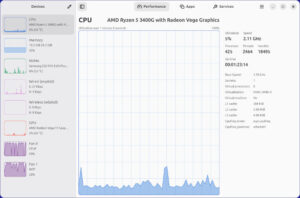
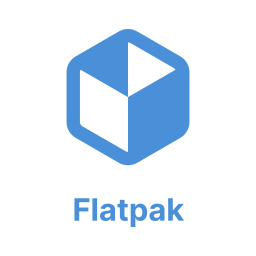
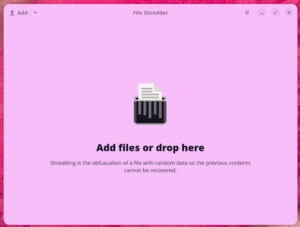

For me Flatpaks have never worked to my satisfaction. In every case they are memory hogs and run sluggishly, if they run at all. Both Flatpak and Snaps should be removed from the Linux desktop!